Points To Remember
What is a bone?
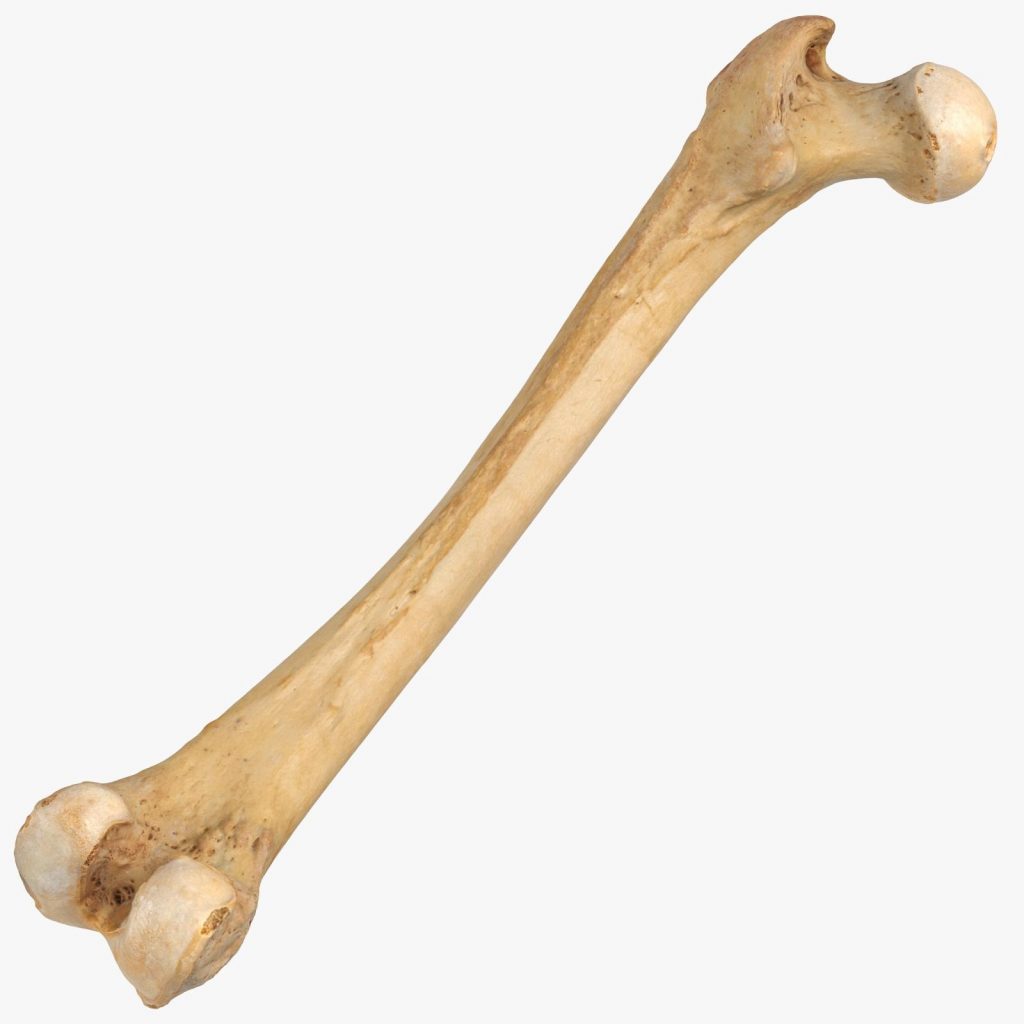
Bone is a hard and tough tissue that makes up the body’s skeleton.
- Adults have 206 bones, while an infant has about 300 bones.
Functions of Bones in Body
- Provide shape and support to the body.
- Protect the organs of the body.
- Help us move.
Structure of Bone
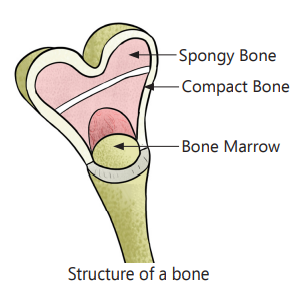
- They are made of calcium, phosphorus and a substance called collagen.
- They are hard on the outside and soft on the inside.
- They can grow and repair themselves.
- There are long bones and flat bones which contain bone marrow, a fatty substance that forms blood cells.
Also Check – Bones And Muscles / The Skeletal System Class 5 – Worksheet
Types of bones

We have different bones in our body and they differ in size and shape.
- Bones in limbs are long ,including those of the fingers and toes.
- Bones in the wrist and ankle are short.
- Skull and breast bones are flat in shape.
- Bones in hips, spine and some other parts are irregular in shape.
What is a skeletal system?
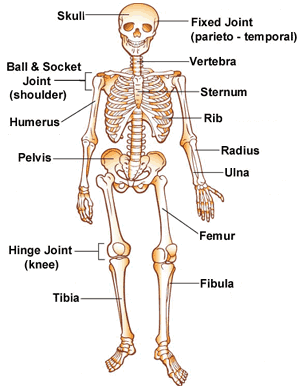
A skeletal system is the central framework of one’s body. It consists mainly of bones and connective tissues such as cartilage, tendons and ligaments.
A skeleton has many important roles:
- It provides shape and support to the body.
- It protects the organs and supports the body: the skull protects the brain and ribs protect the heart and lungs.
- Muscles are attached to the bones. Muscles and bones work together to move parts of the body.
What are the parts of a skeletal system?
A skeleton consists of five main parts:
- Skull
- Vertebral column
- Ribcage
- Limbs
- Girdles
Skull

- The skull forms the head of the body.
- It is made up of 22 bones. Out of it, 14 bones form the frame of our face and rest of the 8 bones are flat bones that are locked together like a jigsaw puzzle and form a hard hollow case known as cranium.
- It protects the brain.
Functions of skull
- The skull gives shape to the face.
- It has space for eyes, nose, ears and mouth.
- It protects the brain, eyes, inner parts of ears and nose and tongue.
- The lower jaw is the only movable joint of the shell and enables us to talk and eat.
Vertebral column
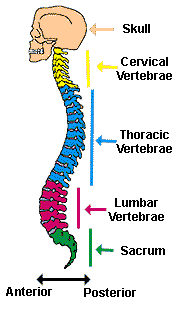
- It makes up the spine, or backbone.
- The vertebral column is a long hollow column of bones.
- The skull is joined to the spine that runs from the base of the skull down to the hip region.
- The vertebral column has 33 small bones. Each bone is ring shaped and known as a vertebra.
- Cartilage (a strong and elastic tissue) is present in between the vertebra and acts as a shock-absorber.
- Out of the 33 vertebrae, the first seven are in the neck region and the last four form the tail bone.
Functions of vertebral column
- It supports the back of the body.
- It protects the spinal cord passing through it.
Ribcage
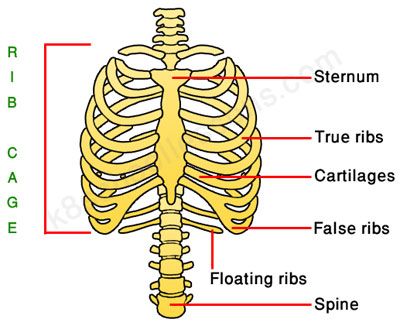
- The ribs are bones present in the chest region.
- There are total 12 pairs of ribs.
- The bones are connected to the vertebral column at the back.
- Ten of the rib pairs are connected to the breastbone known as sternum. The sternum is a flat bone in the middle of the chest.
- The last 2 pairs are not joined to the breastbone and they are called floating ribs.
Function of ribcage
- It protects the heart and lungs.
Limbs
We have two pairs of limbs. Each limb has three bones.
- Forelimbs (arm)
- Hindlimbs (legs)
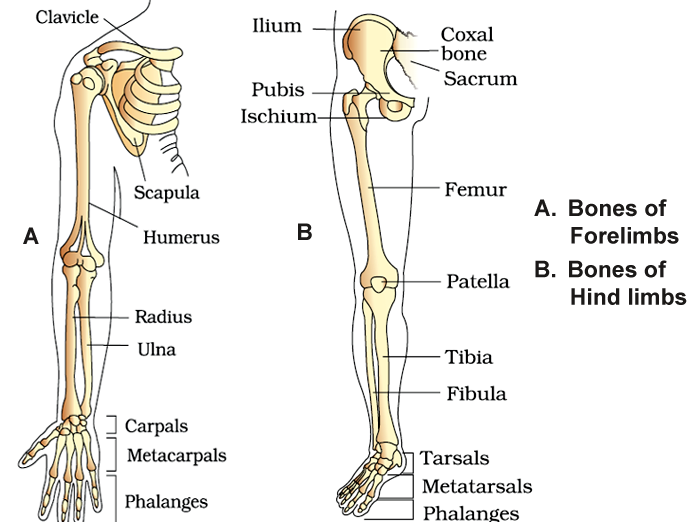
Forelimbs
- The upper arm has a bone called humerus.
- The lower arm has two bones called radius and ulna.
- The wrist and hands are made up of many small bones.
Hindlimbs
- The thigh bone called femur is the longest bone in the body.
- The lower leg has two bones called tibia and fibula.
- The ankle and toes also consist many small bones.
Girdles
The bony structures to which limb bone is attached are girdles.
There are two girdles in the body –
- Pectoral girdle
- Pelvic girdle

- The forelimbs are attached to the pectoral girdle. Each pectoral girdle consists of a shoulder blade and a collar bone.
- The hindlimbs are attached to the pelvic girdle.
Joints
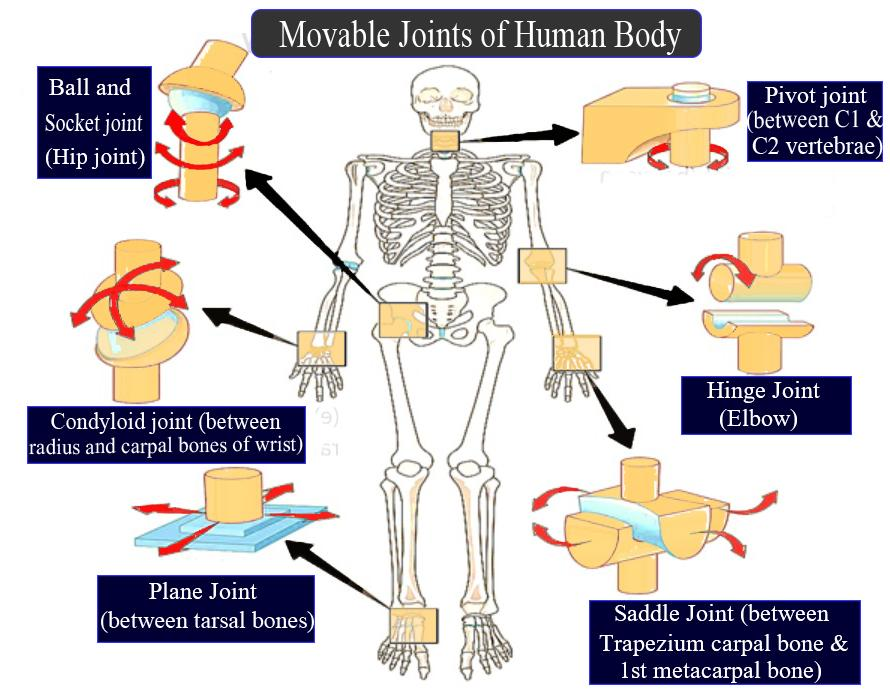
- The place where bones connect is a joint.
- Strong bands of tissue called ligaments hold the bones together at a joint.
There are two kinds of joints in the body:
- Immovable Joints
- Movable Joints
Immovable Joints
Immovable joints are simply bones that do not allow movement amongst them. Eg: joints in the skull.
Movable Joints
Movable joints allow movement of bones. Eg: joints in arms and legs.
Movable joints are of four types.
- Hinge joint
- Ball and socket joint
- Pivot joint
- Gliding joint
Hinge joint:

- A hinge joint allows bones to move in one direction.
- Knees are an example of hinge joint.
Ball and socket Joint

- A joint where one end of a bone is round like a ball to fit into another bone acting like a socket.
- The round bone moves in the socket in almost all directions.
- Hips and shoulders are example of ball and socket joints.
Pivot joint
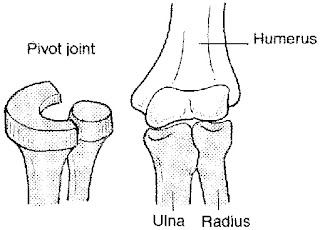
- This joint is present between the first and second vertebrae of the backbone.
- The skull is connected to the vertebrae through a pivot joint.
- It allows both side to side and up and down movements.
Gliding joint:
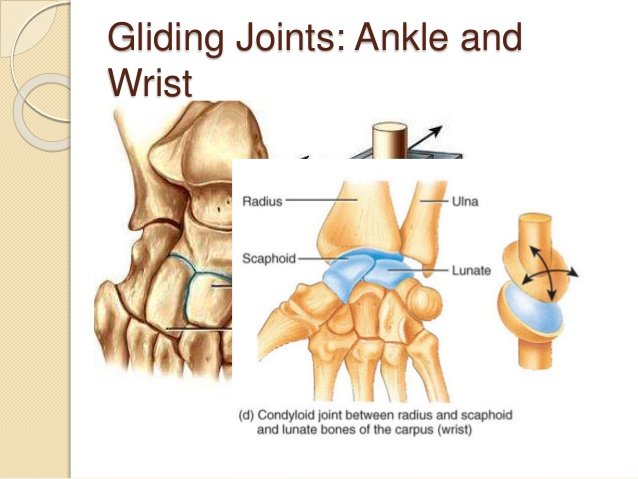
- This joint is present in wrists and ankles. It allows sliding movements.
Cartilage
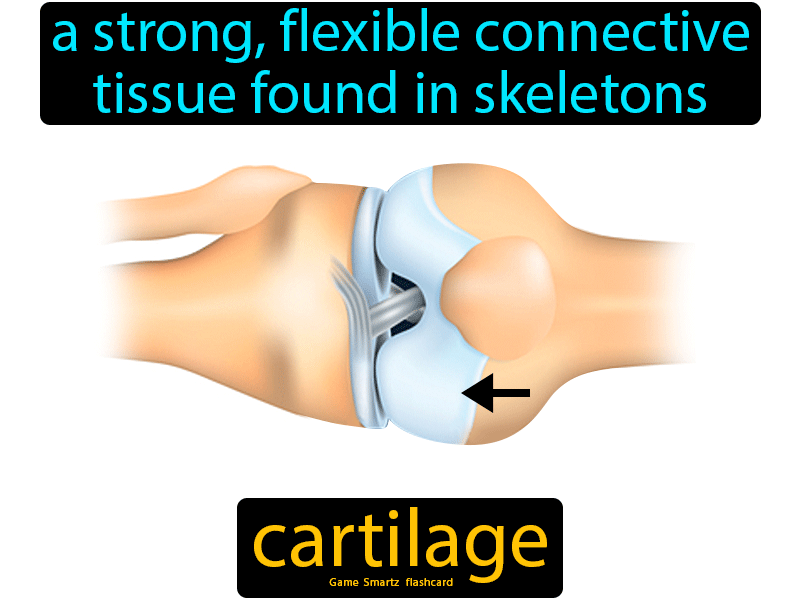
- Cartilage is a strong and elastic tissue.
- It makes the nose and ears soft and flexible.
Functions of Cartilage
- It protects the bones from getting injured.
- It provides flexibility.
Ligament
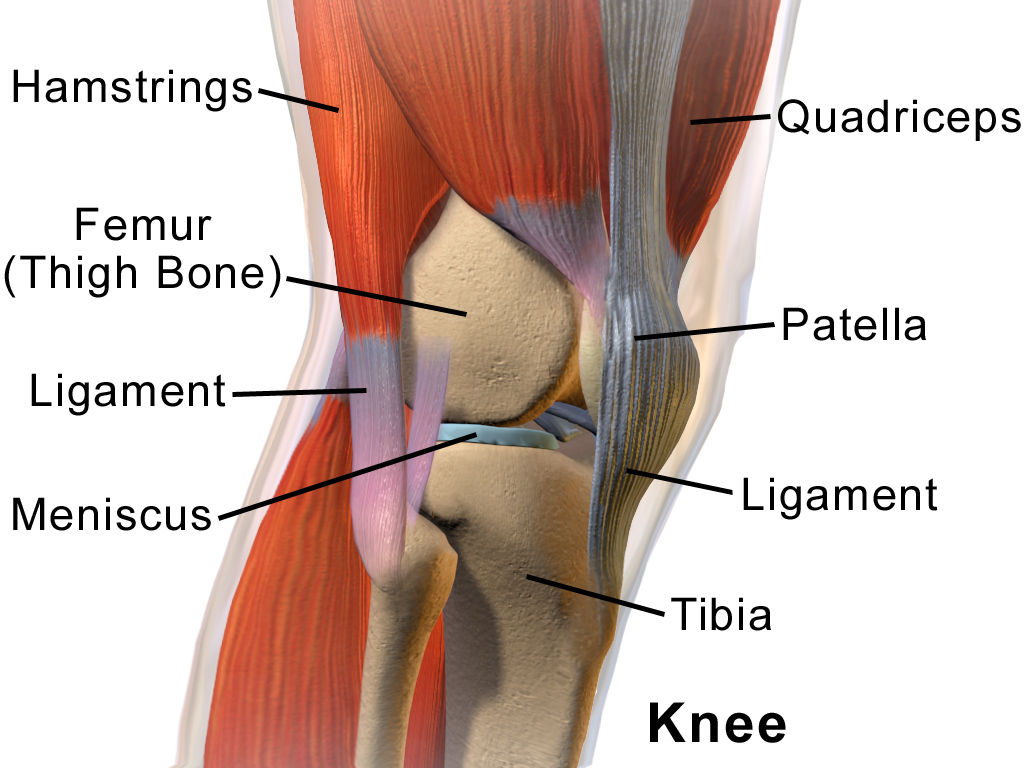
- Ligaments are strong bands of tissue that hold the bones together at a joint.
- There are around 900 ligaments in the body.
Function of Ligaments
- They are strong but they allow movements of the bones.
Muscles
- Muscles are the soft tissues in the body
- The bones of the body cannot move on their own. They move with the help of muscles.
- The human body has around 600 different types of muscles.
- They are present in the organs and around the bones.
- The muscles are attached to bones with a strong fiber called tendon.
2 types of muscles
- Voluntary Muscles
- Involuntary Muscles
Muscular System
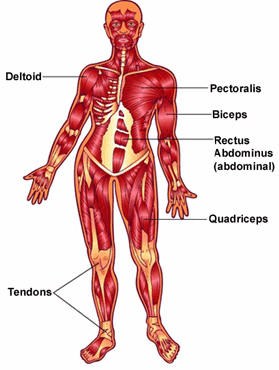
The function of the muscular system is movement and maintenance of posture. The muscles can contract and relax.
Voluntary Muscles
- These are the muscles which work under one’s control.
- The muscles that are in the arms, legs, etc. are examples of voluntary muscles.
Involuntary Muscles
- These muscles do not work under one’s control.
- They work without one thinking about them.
- Eg- the stomach and heart have involuntary muscles.
Muscles are made up of cells called muscle fibers.
3 Important Types of Muscle Fibers

- Striated muscle fibers
- Smooth muscle fibers
- Cardiac muscle fibers
Striated muscle fibers
- They are an example of voluntary muscles and they are attached to the bones.
- They have dark bands running across the muscles.
- They are also known as skeletal muscles.
Smooth muscle fibers
- These are involuntary muscles.
- They are long and narrow at the ends.
- They do not have bands.
- They can contract and relax and work for long without getting tired.
- They are found in the respiratory system organs and circulatory system organs.
Cardiac muscle fibers
- These are involuntary muscles too.
- The heart is made up of the cardiac muscle fibers.
- They have bands similar to that of striated muscle fibers.
- They are powerful and work quickly and continuously without getting tired.

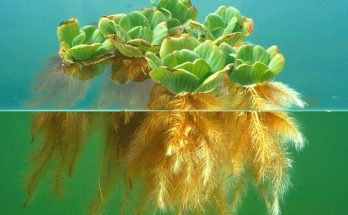
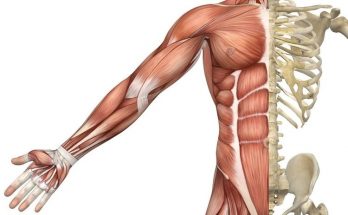
This is very Long but very informative
Thank you
Vv